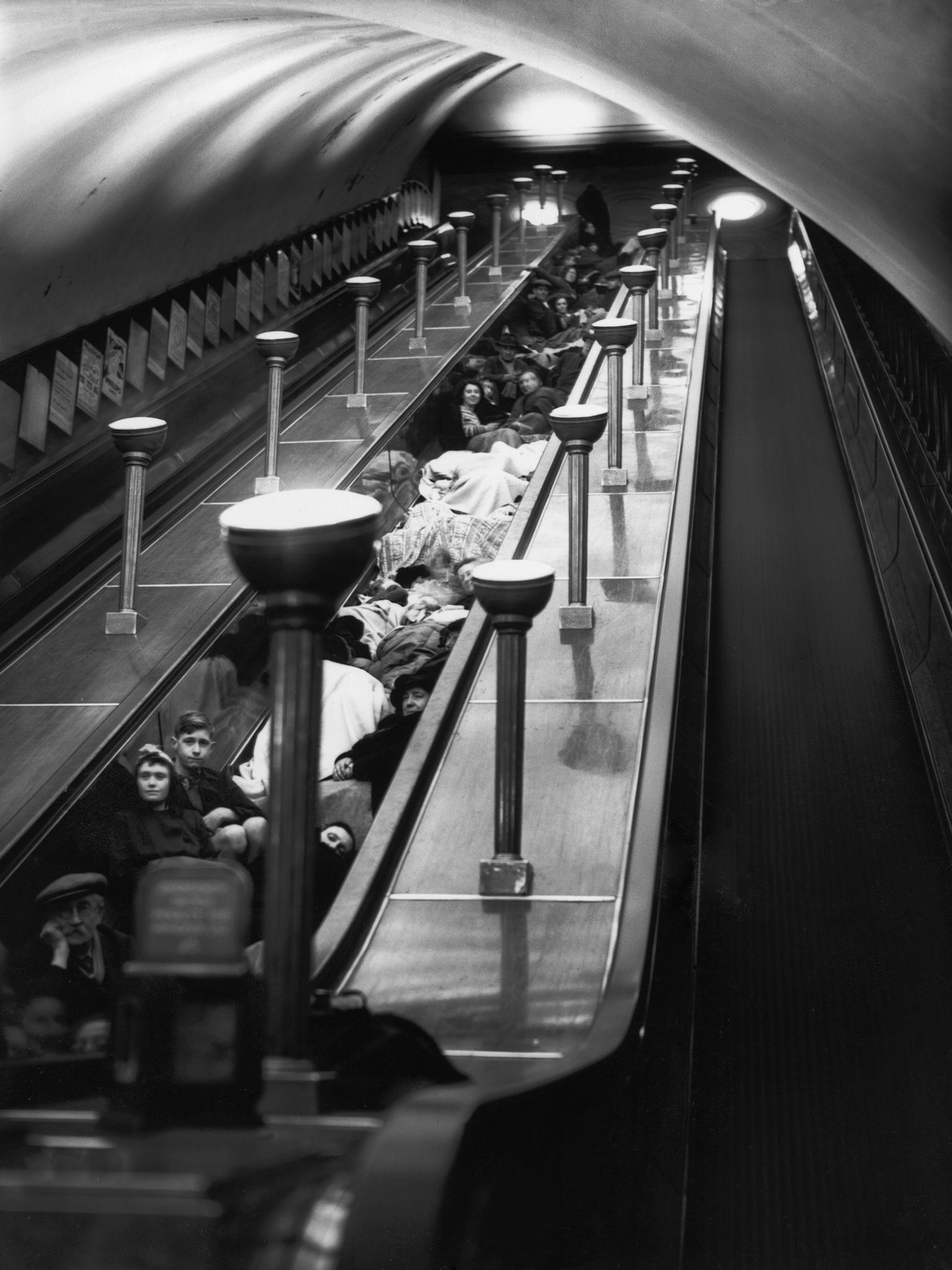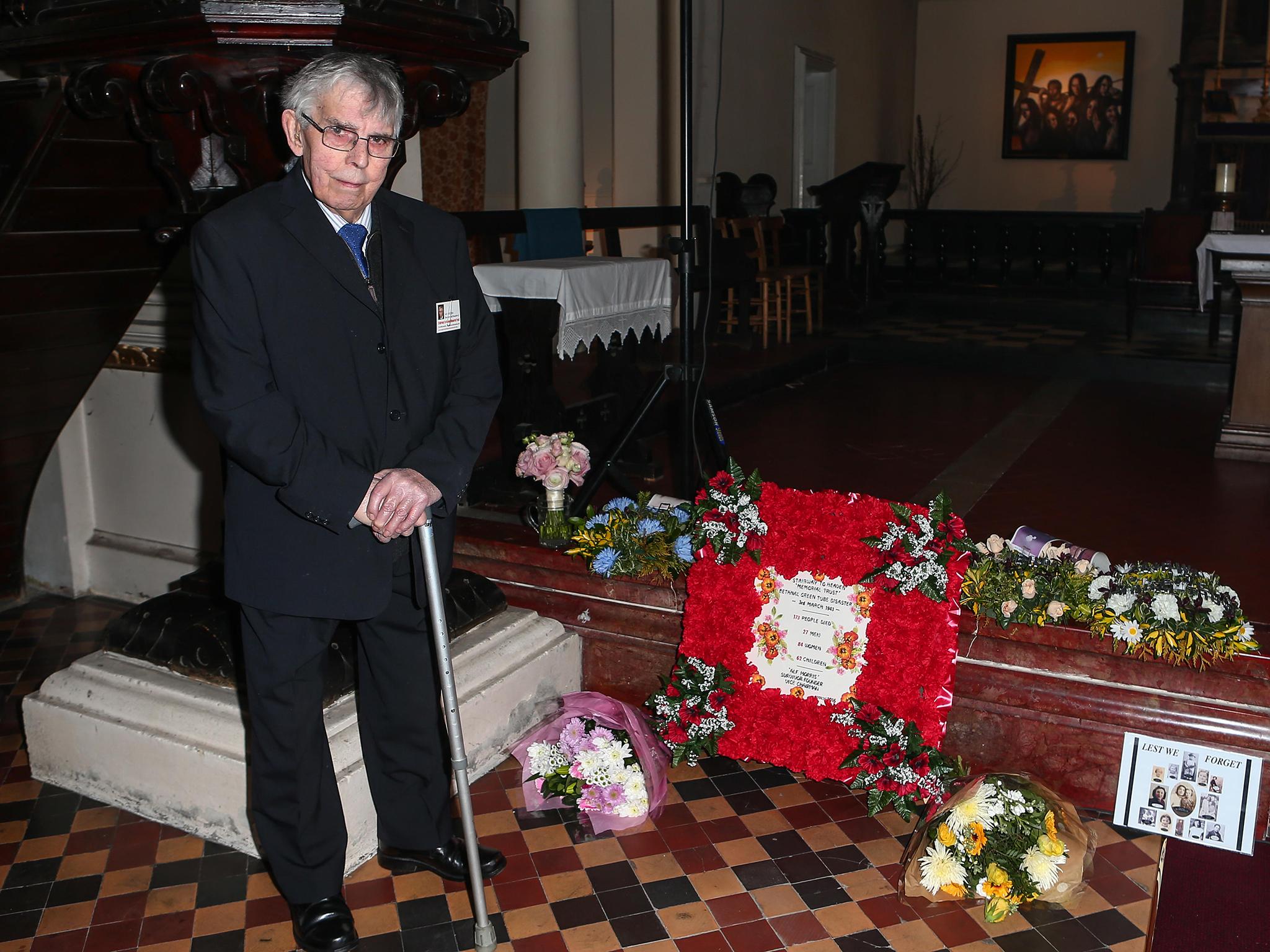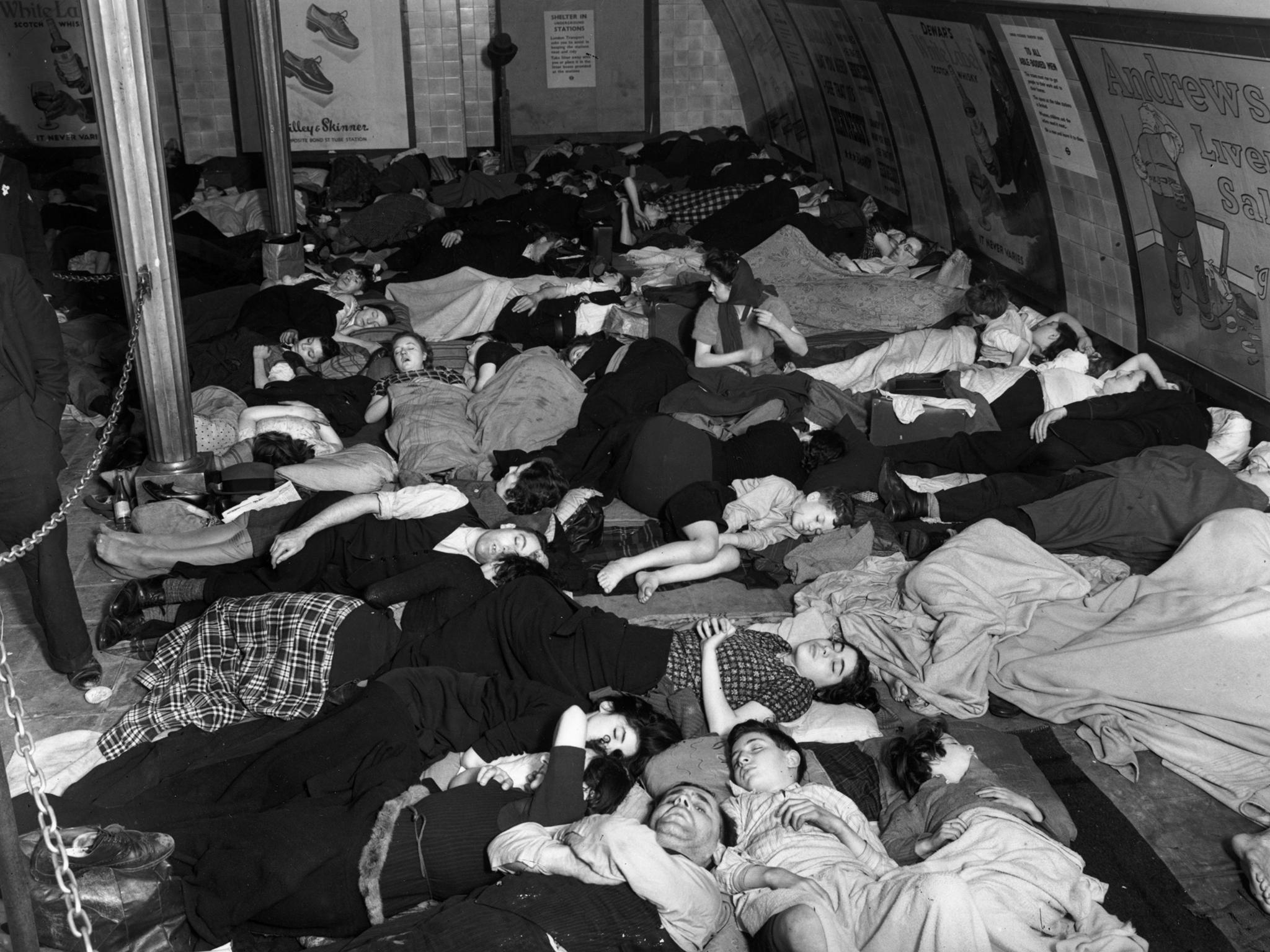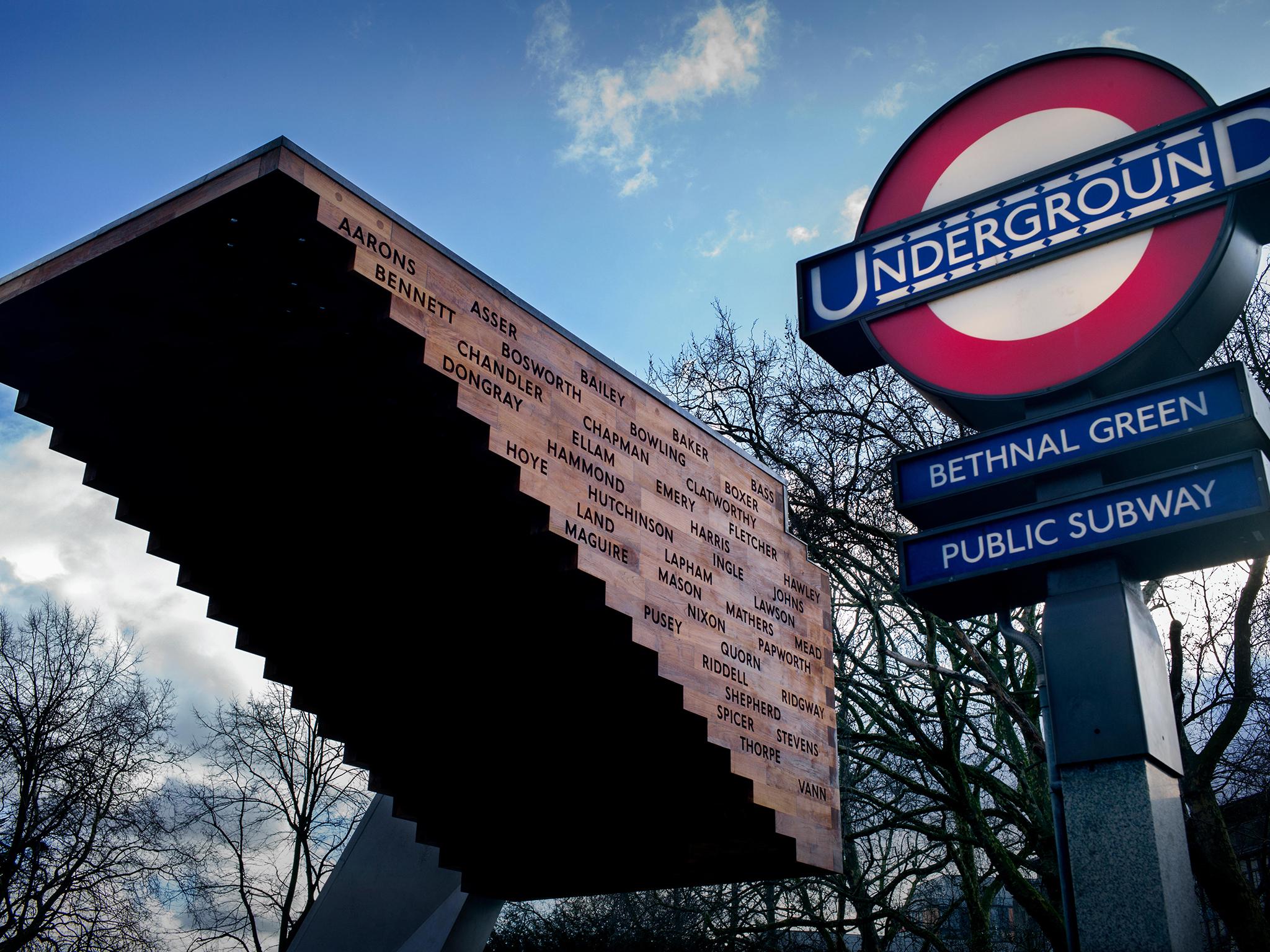Bethnal Green Tube disaster: 75 years on, and 173 victims of wartime tragedy finally have the memorial they deserve
Godfrey Holmes recounts the night which saw the single biggest loss of civilian life during the Second World War – when not a single bomb fell
Your support helps us to tell the story
From reproductive rights to climate change to Big Tech, The Independent is on the ground when the story is developing. Whether it's investigating the financials of Elon Musk's pro-Trump PAC or producing our latest documentary, 'The A Word', which shines a light on the American women fighting for reproductive rights, we know how important it is to parse out the facts from the messaging.
At such a critical moment in US history, we need reporters on the ground. Your donation allows us to keep sending journalists to speak to both sides of the story.
The Independent is trusted by Americans across the entire political spectrum. And unlike many other quality news outlets, we choose not to lock Americans out of our reporting and analysis with paywalls. We believe quality journalism should be available to everyone, paid for by those who can afford it.
Your support makes all the difference.Stampedes start in the wild when animals, guided by herd-instinct, bolt away from perceived danger towards perceived safety. People, despite being supposedly more rational beings, join stampedes for the same reason. It is not so often the stampede that kills, but the resulting crush.
In the UK, when we think of crushes we think of sports stadiums – Burnden Park, Ibrox and Hillsborough. But we should think too of pilgrimages or of pop concerts. Recall Victoria Hall, Sunderland, in June 1883, when 183 treat-seeking children died when they could not exit an inward-opening door quickly enough. Next think of Victoria Park, Bethnal Green.

We venture there in wartime, though Britain’s Darkest Hour is supposedly a distant memory. The raw horror of the dreadful bombing of London in 1940 and '41, the Blitzkrieg – attended as it was by terrible loss of life and buildings – is not quite so immediate.
Nevertheless, emergency evacuations to the coast, then away from the coast, back into Anderson Shelters, basements, and deep tube stations still happen.
Not that the wartime government is ever entirely sure Tube Stations are the answer to the air raid threat. True, underground railway tunnels appear to be a fairly safe haven yet anxiety persists about people developing ‘'deep shelter mentality'’ and refusing to resurface. And wouldn’t London’s vital transport system not be thrown into confusion with so many bundles of humanity asleep on subterranean platforms?
When it comes to it though, people want to feel safe.
So it was at exactly 8.17pm on 3 March 1943, just two days after heavy Allied bombing of Berlin. Londoners feared reprisals. You could no longer be certain those German and Italian bombers would be diverted to Russia.
A searchlight amid total blackout points to the skies as a loud siren sounds.
Ten minutes later, there is the familiar whirring, buzzing sound of “bombs” dropping from on high. Ignorant of the imitative sound of new anti-aircraft rockets being launched for their protection, hundreds of residents head for the mothballed Bethnal Green Tube Station, begun in the 1930s but yet to see its first Central Line train.
At 8.27pm, the footsteps of escapees quicken in response to rumour and unfamiliar artillery noise. Three extra bus-loads of passengers get off at the No 8 stop right next to the station, boosting numbers further. The destination stairwell is very small: its opening a mere 15 x 11 feet, appallingly lit by just one dim, 25-watt bulb. The Metropolitan Borough and its Mayor have long and repeatedly campaigned for better access but requests have been turned down repeatedly by the Home Office.
To make matters worse, the run of 19 steps to an initial landing area has become wet through rain. Rather than panic, there is a fairly orderly – but increasingly wary – flow of dozens of people, mainly mothers accompanied by their children. Very soon, however, three steps up from the bottom, a middle-aged woman and young child fall.
The rest of the tragedy unfolds in little more than 15 seconds; informed, ruled, by the science of the crush. One elderly man falls on top of the two figures who have already stumbled; then the rest of the crowd surges forward. Those at the back have no way of knowing what is happening at the front, so have no reason to stall or turn aside.
Besides, stalling is virtually impossible in the absence of crash-barriers; turning back is futile. Everyone not overcome by claustrophobia is immediately overwhelmed by heat and hysterical helplessness.

This “herd of humanity”, 300 or so strong, piles on top of each other like bricks tipped out of a builder’s skip at full tilt: a phenomenon called “vertical stacking”.
Safety lies through a prospective booking hall beyond the first landing area. But the tumbling, stumbling, crowd hasn’t even got sideways movement, never mind controllable onward movement. Sideways indeed is the only life-saving possibility: but it is impossible. Nor can anyone see anything ahead.
There are no police. No loud hailer. No central railings. No holding of ground. Instead helpless, suffocated, evacuees involuntarily collapse over each other. Fragile hope is to grab the coat of one’s predecessor, a breathless someone about to be asphyxiated, immobilised, by acute compression – the same fate awaiting oneself.
When Air Raid wardens and a single off-duty police officer finally hear the wails and the screams and the shouts – when they recognise the queue has not proceeded as planned – latecomers are held back.
And now, dead bodies begin to be pulled from a scene of horror: 27 men, 84 women and 62 children – including the youngest, 5-month old Carol Geary – are dispatched to Whitechapel or carried into the nearby St John’s Church (a John Soane masterpiece still used to commemorate the disaster).
After cursory identification, many bodies are loaded on to a lorry. Meanwhile, the 60, maybe 90, “lucky” injured – those who remained nearest the top of the human pile – go for hospital treatment as dedicated as it is stretched.
The next day, orphans search in vain for their parents, workers for their colleagues, pupils for their school-mates.
Daily Mail reporter Eric Linden sets about writing up his copy. He is a vital witness. But his dispatch is censored – spiked by the War Office. That does not deter other journalists, anxious to discover what has really happened. According to more than one surviving child, a precious £5 note is offered to each of them to induce the spilling of beans. But traumatised children are too scared, too obedient, to divulge anything that might harm the war effort.
Years pass but many survivors wait more than half a century, or until they are on their deathbeds, before letting go of their secret. The wider public is merely informed that Bethnal Green Underground Station has been the unfortunate target of a bombing raid, a direct hit.
On the following days, the affected staircase is scrubbed clean, any abandoned shoes laid out in pairs. The stairway is then painted, a centre-rail firmly planted: improving Bethnal Green’s access in ways the Borough Engineer had begged for. Proper lighting comes too, along with chemical toilets, basins for washing in and more bunk-beds.
Eventually, belatedly, and not until the early 1950s, dribs and drabs of £60,000 worth of compensation is paid to the surviving relatives of the 173 people who died in the “Tube Shelter Accident”. Another four decades on and a discreet plaque is erected at Bethnal Green Underground: too little, too late.

Then remarkably, in the year 2000, Sandra Scotting from Kent – whose mother Ivy Brind survived the crush at the cost of daily nightmares and considerable mental and physical pain – decides there must be a bigger, better, bolder, memorial to those who perished in what remains Britain’s biggest Tube disaster, as well as the biggest loss of civilian life in a single incident throughout the Second World War.
Even in the 21st century, Bethnal Green’s survivors and their descendants struggle to raise the £660,000 needed to build the huge sculpture, “Stairway to Heaven”, which is planned.
Finally, however, at the end of last year, this great artwork by Harry Paticas – comprising a stairway of 18 inverted wooden steps overhanging a sizeable concrete plinth – comes to fruition. The names of disaster victims are now visible at last. The staircase is perforated with 173 holes so that light can shine through.
The memorial was unveiled on 16 December. The memorial’s trustees had to be absolutely sure three people in particular would be there to see the cloak lifted: 102-year old Dr Joan Martin, MBE, a newly-qualified medic on the fateful night; 85-year old Babette Clarke, one of the few remaining survivors; and 88-year-old escapee Alf Morris, who was heroically dragged to safety by a determined Mrs Chumley, ARP warden.

Alf’s guardian, Aunt Lil, was just behind him and was the last person to be pulled alive out of the obscene pile of purple, disfigured, lifeless, bodies.
The MP for Romford, Andrew Rosindell, sees a measure of justice, as does Dr Toby Butler, previously of the University of East London, still busy collecting first-hand accounts of the disaster; and author Rick Fountain whose 2012 book Mr. Morrison’s Conjuring Trick helped shine new light on governmental chicanery and obfuscation.
At the unveiling, London’s mayor, Sadiq Khan, says in front of subdued onlookers: “This disaster was a tragedy of unimaginable proportions. It was a night that claimed the futures of 173 innocent Londoners and it’s only right that these men, women and children are remembered with this beautiful memorial. The Stairway to Heaven Memorial Trust and all those involved in fundraising have done a fantastic job in creating this fitting monument and ensuring that their memories live on.”
Since that grim night at Bethnal Green three-quarters of a century ago, we have witnessed other bad days on London’s Tube network: the Moorgate crash in 1975, which claimed 43 lives; the Kings Cross fire 12 years later, in which 31 perished; the terrorist bombings in 2005; and others besides.
Overall, Transport for London – charged with carrying four million people a day – can point to a creditable safety record of one passenger fatality per 300 million journeys, which it will seek to maintain.
Yet, lest anyone becomes complacent, let us not ignore the tide of panic in and around Oxford Circus tube station early on the evening of Friday November 24 last year which proves, conclusively, that no one is entirely safe, even if their panic is misplaced.
If and when we witness another stampede, above ground or below, we must never forget to plead for the downtrodden.
* Update. Jimmy Hunt and Peter Perryment, both survivors of the tragedy, sadly died befor the unveiling of the memorial to the disaster. We are sorry that an earlier version of this article indicated that they were still alive. We regret too that Dr Joan Martin was initially referred to as Joan Mason.

Join our commenting forum
Join thought-provoking conversations, follow other Independent readers and see their replies
Comments